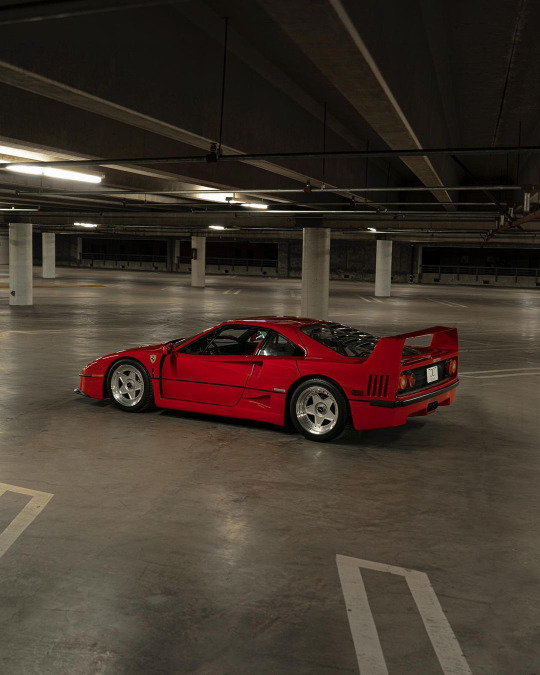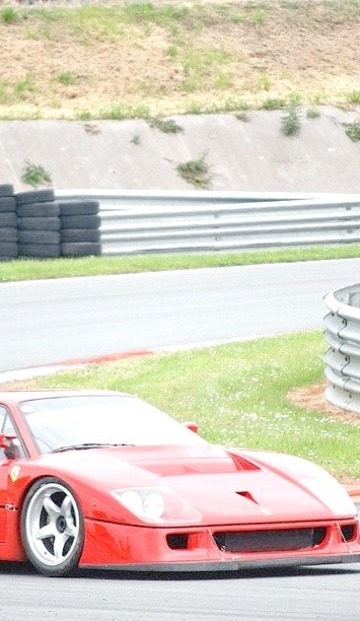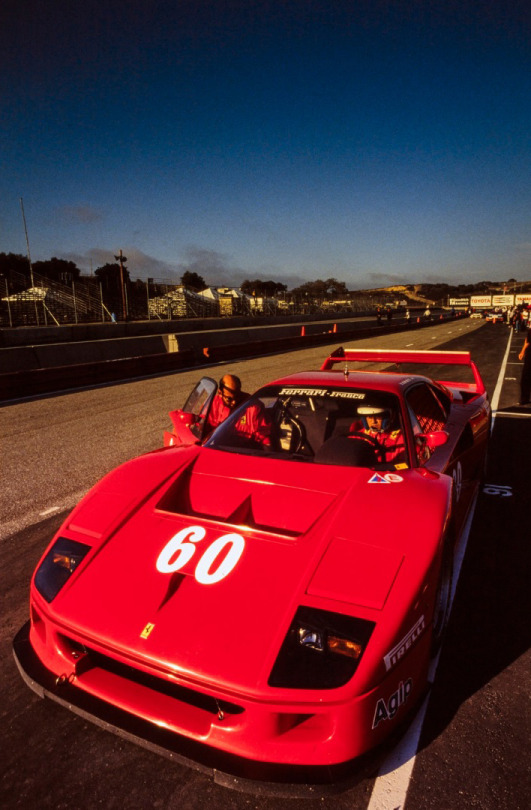#f40 lm
Text

Ferrari F40
#stance#stanced#ferrari#f40#f40 lm#f50#f50 gt#enzo#512tr#testarossa#laferrari#360 modena#f355#f355 spider#f355 f1#348 tb#348 spider#f430#f430 spider#458 spider#458 italia#458 speciale#488 gtb#488 spider#488 pista#f8 tributo#f8 spider#f12berlinetta#f12tdf#ff
134 notes
·
View notes
Photo
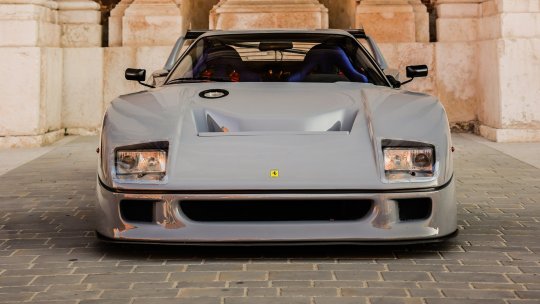

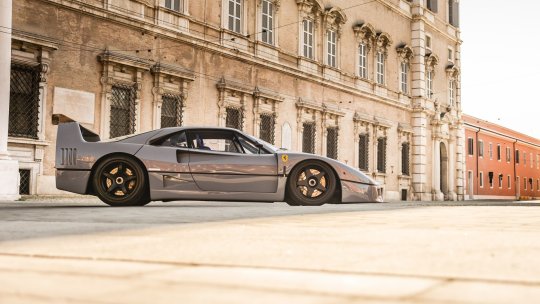
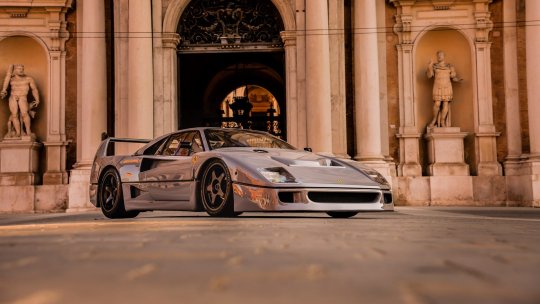



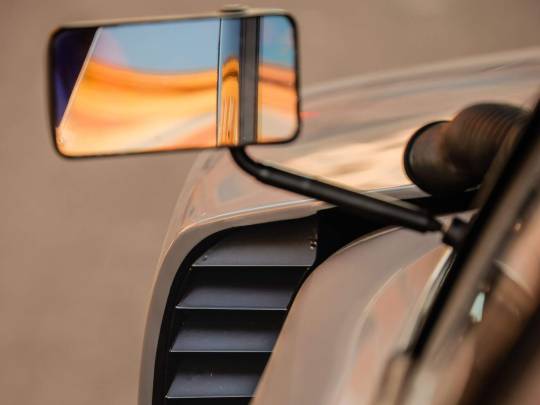


Ferrari F40 Competizione (700-1.000 HP)
Undoubtedly the most iconic supercar of the 1980s, the Ferrari F40 was nothing short of a sensation when it was announced and remains a global icon to this day. Although the car was never originally intended for racing use a number of individuals saw its potential. Ferrari would eventually authorize Michelotto to produce a series of racing examples that adhered to IMSA rules, giving the world’s fastest production car a chance to earn its keep on the race track.
Michelotto built up nineteen F40s that were classified as F40 LM (for Le Mans). Seven F40 GTs were built by Michelotto for use in the Italian Supercar Championship, followed by a further seven built for the BPR Global GT Series referred to as the F40 GTE, an evolution of the LM. With the success and excitement created around the appearance of the aforementioned F40 LM’s GT and GTEs, a number of other F40s which were born as road cars were upgraded for use in racing, such as the example offered here.
Originally constructed as an early ‘non-cat, non-adjust’ F40, chassis number 80782 was delivered new to Kroymans BV, the official Ferrari importer of the Netherlands following completion at the factory in November of 1989. The car remained in the Netherlands and three years after departing the factory, it was rebuilt for racing by Peter van Erp of Cavallino Tuning, the racing arm of Kroymans. No work was done to the engine at this time, but van Erp modified the suspension by fitting all-new racing shock absorbers produced by Intracks, a Stack instrumentation system, brakes, and bodywork including a repaint in yellow.
Shortly after, it came into the hands of the Zanasi Group Maranello, who further refined it by disassembling it completely and making the mechanical adjustments that today allow this F40 to deliver between 700 and 1,000 horsepower depending on the setting, in addition to adding the exclusive Grigio Nardo gray color that You can see in these photos, that it is also accompanied by new exterior parts such as its carbon fiber spoiler, new air intakes among other things that make it an F40 Competizione for all intents and purposes, but with 1,000 CV. Which makes it one of the fastest and most powerful F40s ever.
222 notes
·
View notes
Text

Ferrari F-40 LM
267 notes
·
View notes
Text
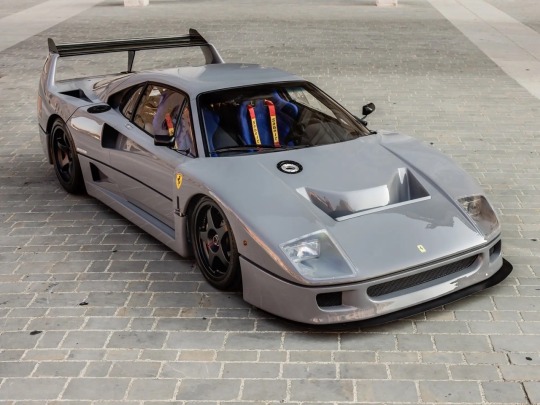

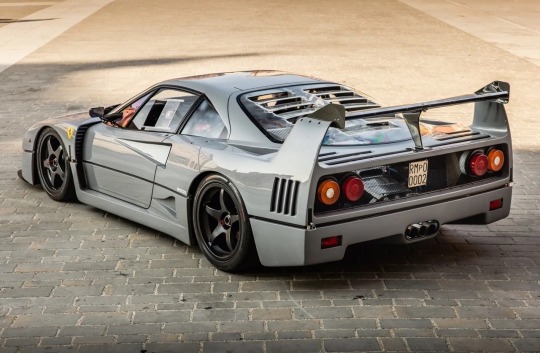
103 notes
·
View notes
Text

Ferrari F40 LM
186 notes
·
View notes
Photo
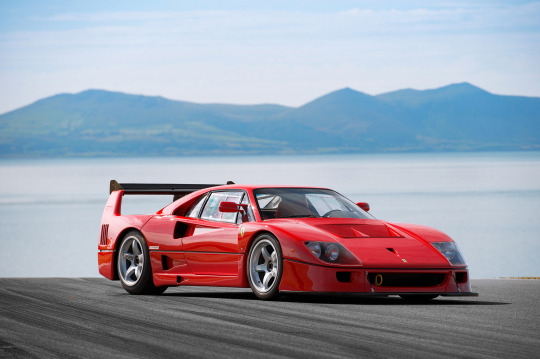
Ferrari F40 LM
Images by Dean Smith || IG
110 notes
·
View notes
Text



Beurlys F40 LM Barchetta, 1998. A one-off open roof F40 commissioned by Jean 'Beurlys' Blaton, a Belgian billionaire. He enlisted Belgian car-builder Tony Gillet and Michelotto to supervise the rebuild and create a topless F40 LM. Michelotto had built 19 F40 LM models for Ferrari. However changes of this magnitude led Ferrari to disqualify the Barchetta as Ferrari product so the Beurlys car has no Ferrari or F40 badges and though 19 F40 LM cars were made Ferrari only acknowledges 18.
#Ferrari#Ferrari F40 LM#F40 LM Barchetta#Michelotto#one-off#open roof#coachbuilt#Beurlys#Jean Blaton#Ferrari F40#1998#one of one
320 notes
·
View notes
Text
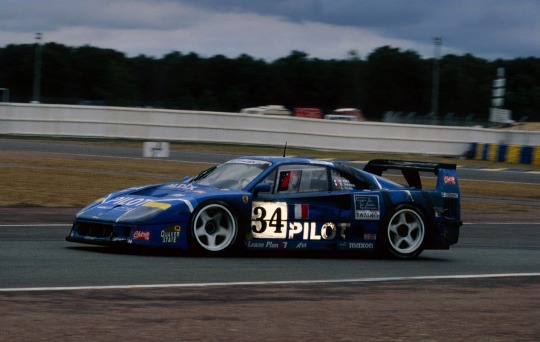
The detritus of rubber, rocks & brake dust accumulate on the N°34 Pilot Aldix Racing Ferrari F40 LM pacing the morning light at the 1995 24 Heures du Mans.
#ferrari f40 lm#24 heures du mans#pilot aldix racing#circuit de la sarthe#24 hours of le mans#lmgt1#1995 lemans24#ferrari f40
23 notes
·
View notes
Text

Ferrari F40
#stance#stanced#liberty walk#lb works#widebody#ferrari#f40#f40 lm#f50#f50 gt#enzo#laferrari#testarossa#512tr#348 ts#348 tb#348 gtb#348 gts#f355#f355 spider#f355 f1#360 modena#360 spider#f430#f430 spider#458 italia#458 spider#458 speciale#488 gtb#488 spider
58 notes
·
View notes
Photo
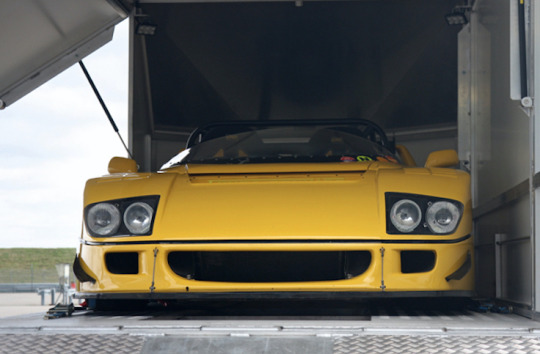

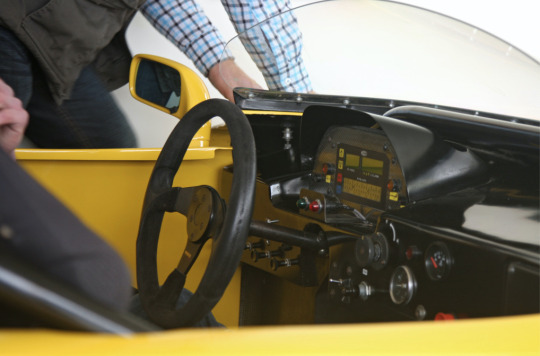

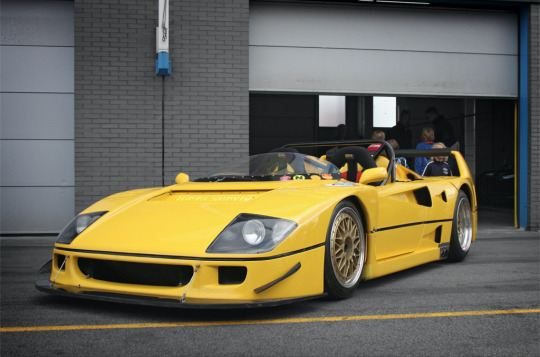

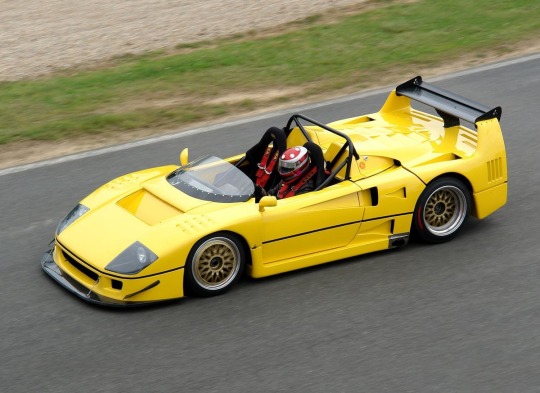
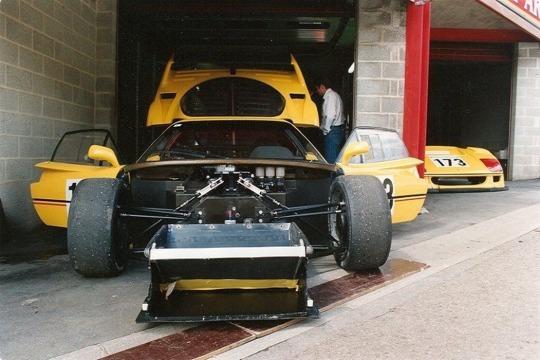
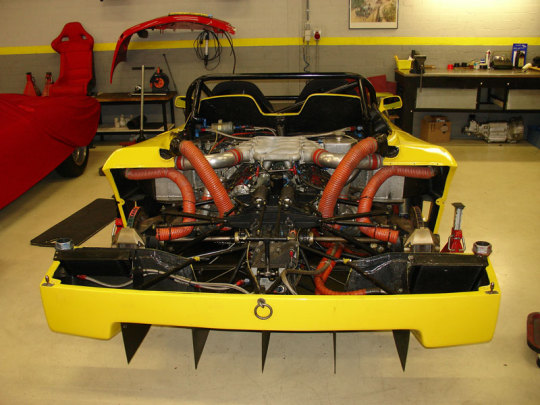
Ferrari F40 LM Barchetta (the F40 that Ferrari Says Doesn’t Exist).
There’s an F40 that isn’t regarded as a Ferrari by Ferrari themselves! Its name: LM Barchetta.
The Ferrai F40 was the last car developed under the supervision of Il Commendatore Enzo Ferrari, before he passed away. It was a tough, barely road-legal race car with a 2.9-litre twin-turbo V8, producing 478bhp (and said to offer much more). Coupled with a composite central structure, tubular space frames, and lightweight composite bodywork, it propelled the car to 201 mph (323 kph). The F40's biggest claim to fame was being the first production car to break the 200 mph barrier. The car was stripped of any unnecessary luxury features: no radio, no floor mats, no air conditioning, even the door was opened by pulling on an exposed wire in the door instead of chunky handle and lever construction and therefore much heavier. They are usually found in automobiles. As a result of this dedication to the car's performance, it looks rather rough around the edges in places.
Enzo Ferrari had always seen his road cars as a way to fund his racing programmes and, of course, the F40 was no exception. Ferrari enlisted the help of Michelotto, a long-term Ferrari race car builder, to make the F40 eligible for the IMSA GT Series in the US. Michelotto extensively rebuilt the F40 and turned them into the F40 LM. The chassis was changed, the suspension was changed, the bodywork was altered and the engine was tuned. The final result was 720bhp, a huge increase in power compared to the road-going F40. Top speed increased from the original 201mph (323kph) to an astonishing 229mph (369kph). To make the car run in other series as well, it was changed to the F40 GT, the F40 GTE and the F40 Competizione, although changes were limited to restrictions in safety and power output only, depending on regulations.
The car was bought by Jean ’Beurlys’ Blaton, a Belgian billionaire with a passion for cars. Not satisfied with a one-of-nineteen car, an ‘ordinary’ car that any fellow billionaire could purchase, Blaton wanted his car to be unique. In theory at least.The roof was cut off, the bodywork was altered again, a competition windshield was installed, the engine’s restrictor was removed, the exhaust was rerouted to exit on the side, a roll-cage was installed and the chassis was upgraded with F1-style pushrod suspension. Oh, and the car was painted yellow, the official historic racing colour for Belgium.
One of the things you might notice when you go over images of all these F40s is that where other cars had “F40” stamped into one of the uprights of the massive rear wing, this one doesn’t. It has no Ferrari badge either, per order of the Italian manufacturer. The brand is so protective of its cars that changes of this magnitude disqualify them as a Ferrari product. So, occasionally, a cease-and-desist order is sent out to remove all prancing horse badges, Ferrari logos and trim from the car(s) in question. And thus the car is scrapped from the company’s archives and “lost”, even though most of its history is known.
#Ferrari F40 LM Barchetta#Enzo Ferrari#Michelotto#F40 Competizione#F40 GT#F40 GTE#Jean ’Beurlys’ Blaton
131 notes
·
View notes
Text

Ferrari F40 LM
10 notes
·
View notes
Text

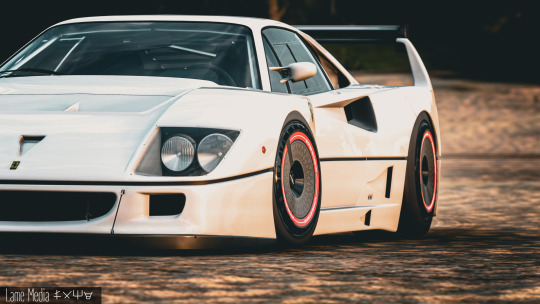

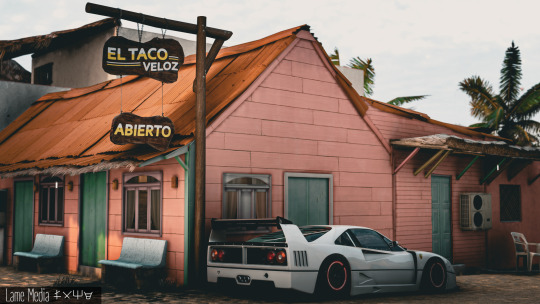


Suspension? Not here, and so is the case with the floorpan. Gone to smithereens with the corrosion of the sea, but at least it looks fine and turns head
please don't sue me Ferrari
7 notes
·
View notes
